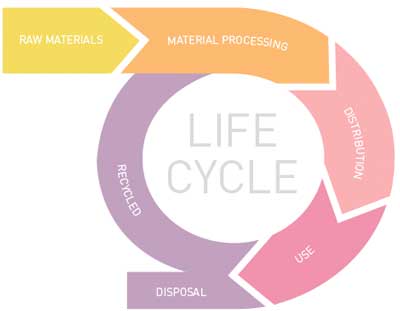| Posted: Feb 26, 2018 |
Nanomaterials: what are the environmental and health risks?
(Nanowerk News) Over 100 scientists from 25 research institutions and industries in 12 different European Countries, coordinated by the group of professor Antonio Marcomini from Ca’ Foscari University of Venice, have completed one of the first attempts to understand the risks nanomaterials carry throughout their life-cycle, starting from their fabrication and ending in being discarded or recycled.
|
|
From nanoscale silver to titanium dioxide for air purification, the use of nanomaterials of high commercial relevance proves to have clear benefits as it attracts investments, and raises concerns. ‘Nano’ sized materials (a nanometre is one millionth of a millimetre) could pose environmental and health risks under certain conditions. The uncertainties and insufficient scientific knowledge could slow down innovation and economic growth.
|
|
How do we evaluate these risks and take the appropriate preventative measures? The answer comes from the results of the Sustainable Nanotechnologies Project (SUN), which has been given 13 million euros of funding from the European Commission.
|
 |
|
Over 100 scientists from 25 research institutions and industries in 12 different European Countries, coordinated by the group of professor Antonio Marcomini from Ca’ Foscari University of Venice, have completed one of the first attempts to understand the risks nanomaterials carry throughout their life-cycle, starting from their fabrication and ending in being discarded or recycled.
|
|
After 3 years of research in laboratories and in contact with industrial partners, the scientists have processed, tested and made available an online platform (https://sunds.gd/) that supports industries and control and regulating institutions in evaluating potential risks that may arise for the production teams, for the consumers and for the environment.
|
|
The goal is to understand the extent to which these risks are sustainable, especially in relation to the traditional materials available, and to take the appropriate preventative measures. Additionally, this tool allows us to compare risk reduction costs with the benefits generated by this innovative product, while measuring its possible environmental impact.
|
|
Danail Hristozov, the project’s Principal Investigator from the Department of Environmental Sciences, Informatics and Statistics at Ca’ Foscari, commented: “The great amount of work done for developing and testing the methods and tools for evaluating and managing the risks posed by nanomaterials has not only generated an enormous amount of new scientific data and knowledge on the potential dangers of different types of nanomaterials, but has also resulted in key discoveries on the interactions between nanomaterials and biological or ecological systems and on their diffusion, on how they work and on their possible adverse consequences. These results, disseminated in over 140 research papers, have been immediately taken up by industries and regulators and will inevitably have great impact on developing safer and more sustainable nanotechnologies and on regulating their risks”.
|
|
The SUN project has also composed a guide for the safest products and processes, published on its website: www.sun.fp7.eu.
|
Studied Materials
|
|
Scientists have focused their research on specific materials and their us, in order to analyse the entire life cycle of the products. Two of the best-known were chosen: nanoscale silver that is used in textiles, and multi-walled carbon nanotubes that is used in marine coatings and automotive parts. Less known materials that are of great relevance for their use were also included: car pigments and silica anticaking agents used by food industry.
|
|
Lastly, SUN included nanomaterials of high commercial value which are extremely innovative: Nitrogen doped Titanium Dioxide for air purification is a new product enabled by SUN and exploited by the large colour ceramics company Colorobbia. The copper based coating and impregnation for wood protection has been re-oriented based on SUN safety assessment, and the Tungsten Carbide based coatings for paper mills is marketed based on SUN results.
|

